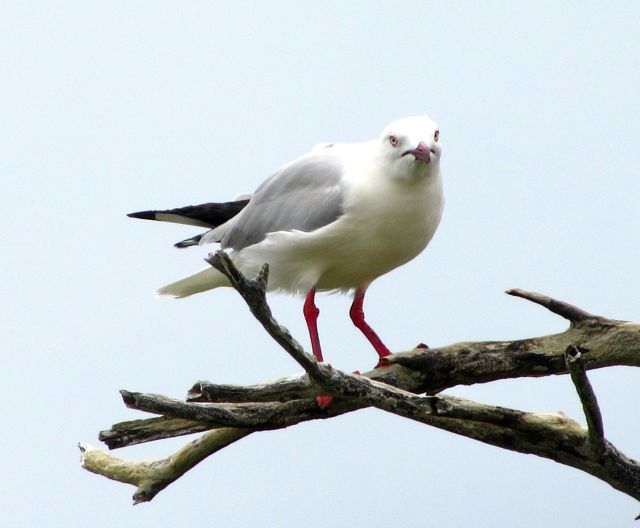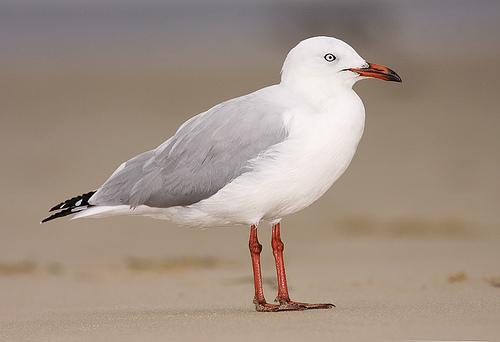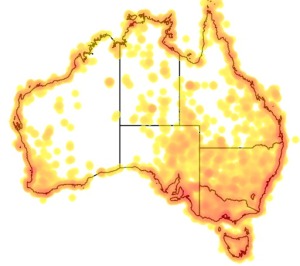�
�
�
���
Chroicocephalus novaehollandiae
Silver Gull
Kingdom
Animalia
Phylum
Chordata
Class
Aves
Order
Charadriiformes
Family
Laridae
Genus
Chroicocephalus
Species
Chroicocephalus novaehollandiae
Colours
Distinguishing features
The head, body and tail are white. The wings are light grey with white spotted, black tips. Juveniles have brown patterns on their wings, and a dark beak. Adults have bright red beaks—the brighter the red, the older the bird. (Wikipedia)
Size
- From 40 cm to 45 cm (Length of specimen)
Wingspan
- From 85 cm to 100 cm
Synonyms
Interesting facts
- One gull that was named ‘Steven’ would wait for a signal (one of the crew holding his hand up) and then would fly up to the boat and catch prawns that were thrown into the air for him.
Distribution
Distribution and habitat preferences
Silver gulls are found, mainly in coastal areas, in all states of Australia. It is a common species, having adapted well to urban environments and thriving around shopping centres and garbage dumps. (Wikipedia)
Local abundance
- Cape Kidnappers, New Zealand: abundant
Audio recordings
Diet
It naturally feeds on worms, fish, insects and crustaceans. It is a successful scavenger, allowing increased numbers near human settlements. (Wikipedia)
Web resources
References
- Smith, G.C. (1987). The birds of Eagle Island, a tropical sand cay on the northern Great Barrier Reef, Australia, The Sunbird, 17(1): 1-11. LIRS catalog number 245.




